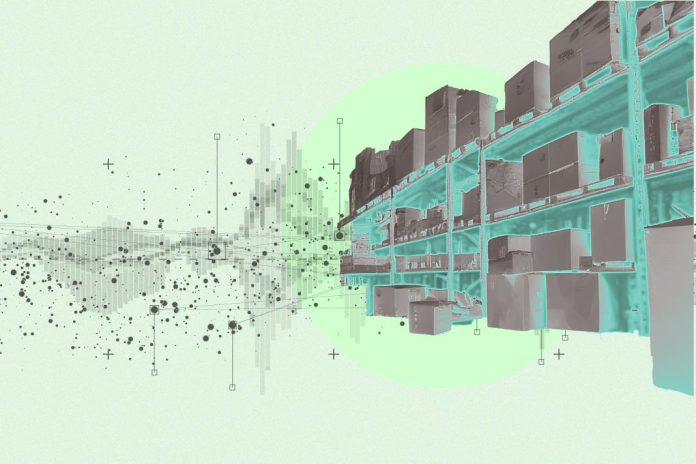In a high-stakes strategy meeting, an organisation’s leadership team demands clarity on a sudden spike in customer churn. The speed and precision of the response is not determined by what analysts can do today, but by the data infrastructure decisions made years earlier.
This is the hidden dilemma faced by data architects: every future insight, every competitive edge, depends on the foundation laid long before it’s needed.
If the organisation invested in a Data Warehouse, a polished dashboard could be presented within minutes: churn rose by 15%, with the majority of losses tied to a specific customer segment. The data is structured, trusted, and decisive.
If the underlying foundation is a Data Lake, the response takes a different shape. Teams have access to raw data sources, from support calls and reviews to competitor ads and behavioural patterns.
One provides the perfect rearview mirror; the other offers an exploratory lens for the road ahead. In the age of AI, choosing the right data blueprint is no longer merely a technical decision; it’s among the most strategic calls a company can make.
The Two Philosophies: A Library vs. a Reservoir
When building modern data infrastructure, two dominant philosophies have emerged: the Data Warehouse and the Data Lake. While both store data, they serve very different functions. Understanding their distinct roles is essential for aligning architecture with business ambitions, especially in an AI-driven world.
The Data Warehouse: The Polished Library
Think of the data warehouse as a meticulously curated library. Before anything is added, it goes through a careful process of review, formatting, and categorisation, which technologists call “schema-on-write.” This means data must be structured and cleaned at the point of entry.
Once inside, everything is in its proper place. Each dataset is well-organised and trusted—sales figures, customer records, and inventory reports. This makes the warehouse a perfect source for business intelligence (BI) dashboards, key performance indicators (KPIs), and financial reporting, where accuracy and consistency are non-negotiable.
The Data Lake: The Vast Reservoir
In contrast to the structured precision of a data warehouse, a data lake is built for flexibility. It stores data in its raw, unprocessed form—everything from customer support transcripts and clickstream data to Internet of Things (IoT) sensor logs and social media images. This approach, known as “schema-on-read,” means structure is applied only when the data is queried, not when it’s ingested.
This makes the data lake ideal for organisations that need to explore vast datasets or work with data types that don’t fit neatly into rows and columns. Rather than just answering known questions, data lakes support open-ended analysis, helping teams discover patterns, test hypotheses, and uncover insights that weren’t visible before.
The Jobs-to-be-Done: A Leader’s Cheat Sheet
| Factor | Data Warehouse | Data Lake |
| Primary Goal | Fast, Reliable Business Reporting | Deep, Exploratory Analysis & Innovation |
| Data Type | Structured, Processed Data | Raw, Diverse Data (structured and unstructured) |
| Key Use Case | Dashboards, KPIs, Compliance Reports | Predictive Models, natural language processing (NLP), Behavioural Insights |
| Primary User | Business Analysts, Operations Leads, Execs | Data Scientists, machine learning (ML) engineers |
| Governing Principle | Accuracy, Consistency, Governance | Flexibility, Scale, Discovery |
| Biggest Risk | Rigid; misses nuances, slow to adapt | Unstructured; can become a disorganised “data swamp” |
The AI Catalyst: Why This Debate Is More Urgent Than Ever
For years, the conversation around data warehouses versus data lakes has centred on reporting versus exploration. But with the rapid rise of AI, especially machine learning and generative models, the stakes have dramatically changed. This is no longer a debate about IT architecture. It’s about how well a business can compete in an AI-driven world.
The Warehouse Bottleneck
Data warehouses are optimised for human decision-making. They deliver clean, trusted data for dashboards, KPIs, and regulatory reports. But in doing so, they often strip out the very signals that AI models find valuable. Anomalies, outliers, raw language, or behavioural nuances are typically cleaned, transformed, or discarded before data even enters the warehouse. The result? While ideal for executives seeking clarity, a warehouse can starve AI systems of the messy, high-volume data they need to detect patterns and learn autonomously.
The Lake as an AI Engine
In contrast, the data lake is built for scale, variety, and flexibility—precisely the ingredients AI thrives on. Whether it’s training a recommendation engine with clickstream data or powering a generative AI model with millions of unstructured text files, the data lake provides the raw fuel. Modern AI systems don’t want the clean, simplified story. They want everything. Predictive algorithms surface insights from chaos. Generative models rely on vast and varied inputs to create human-like content. The data lake embraces that messiness and turns it into an asset.
In short, if the warehouse serves human logic, the lake feeds machine intelligence. As AI becomes central to product innovation, customer engagement, and operational efficiency, the choice of data architecture is no longer just a back-end decision. It’s a defining move for future competitiveness.
Beyond the Binary: Enter the Data Lakehouse
It’s easy to frame the data architecture debate as a choice: warehouse or lake. But in reality, most organisations don’t want to choose. They want both speed and flexibility, governance and scale. That’s where the Data Lakehouse comes in.
The lakehouse is a modern hybrid approach that combines the low-cost, scalable storage of a data lake with the structured, governed features of a data warehouse. In simple terms, it lets you store everything, from clean reports to raw files, in one system, without giving up performance or control. You get the flexibility to run advanced analytics and machine learning on raw data, and the ability to deliver trusted dashboards to business teams—all without constantly copying and transforming data between systems.
The Strategic Benefit
The lakehouse breaks down silos. Instead of managing two separate pipelines for reporting and AI, you build once and serve everyone, from executives to data scientists, on a single, unified platform. It simplifies your architecture, reduces storage and compute costs, and accelerates how quickly you can turn data into decisions. In the AI era, the lakehouse isn’t just a compromise. It’s becoming the foundation for data-driven organisations that want to move faster with fewer trade-offs.
It’s Not the Tool, It’s the Strategy
At its core, choosing between a data warehouse, a lake, or a lakehouse isn’t a technical decision; it’s a strategic one. These architectures aren’t just systems; they’re reflections of what your business values most.
Start not with the technology, but with the mission:
- What are you solving for?
- Who needs the answers?
- And how fast do those answers need to scale?
The companies leading in AI aren’t those with the fanciest tools, but those with the clearest vision and a data strategy that aligns with it. Choose your blueprint not just for today’s needs, but for the questions you haven’t yet thought to ask.

